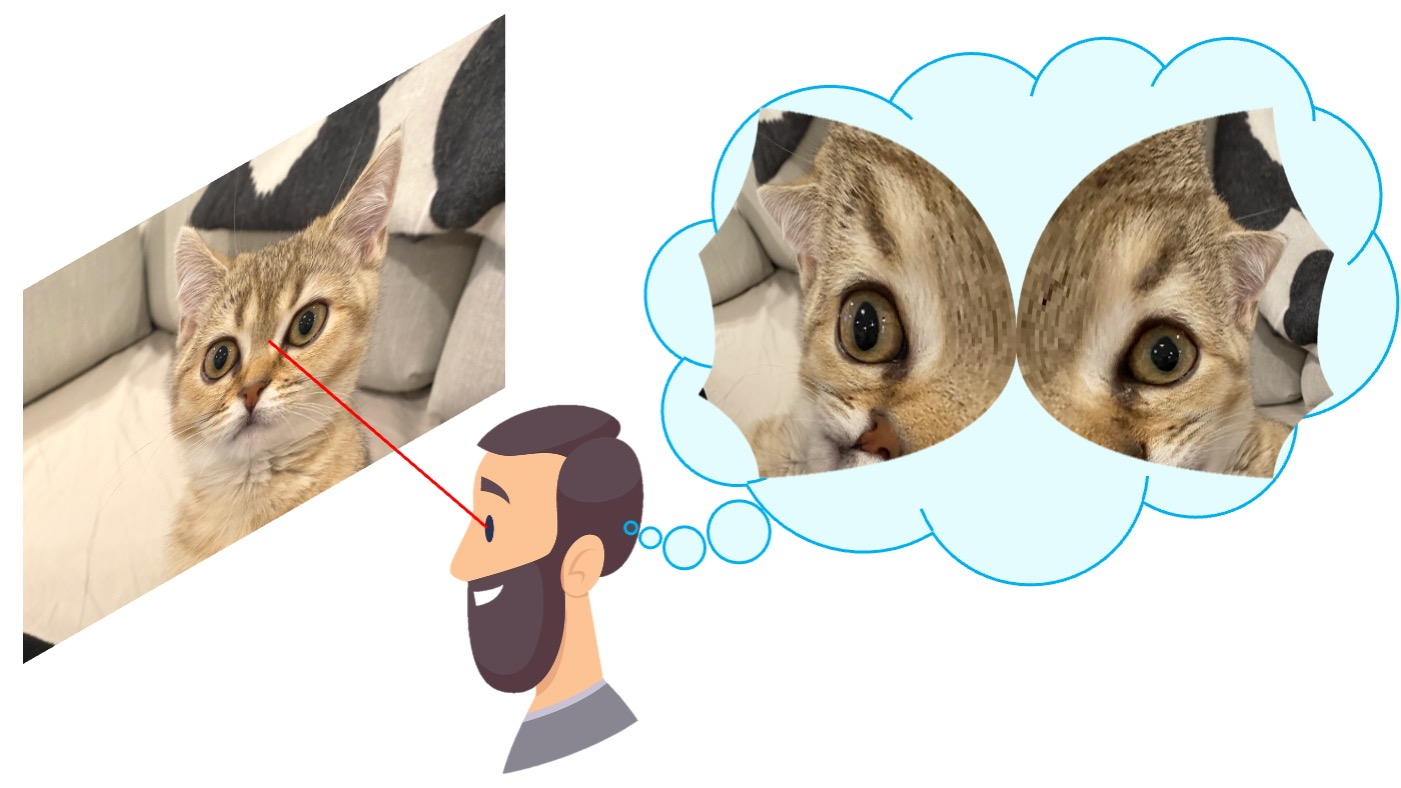Out of sight, quickly out of mind
We are very bad at recalling objects at our gaze direction from short-term memory - even though this is the area we see most sharply, report brain researchers from Tübingen led by Professor Ziad Hafed.

This is how the researchers imagine the distortion of an object in short-term memory. The part of the cat that lies in the central line of sight is presented disproportionately. Peripheral areas, on the other hand, appear compressed. Copyright: Ziad Hafed, 2022
Bernstein members involved: Konstantin Willeke, Ziad Hafed
Our vision is sharpest in the area of the visual pit (lat. fovea centralis). Paradoxically, we can recall this part of the visual field extremely poorly from short-term memory. This is the result of a study by Professor Dr. Ziad Hafed and his team from the Hertie Institute for Clinical Brain Research and the Werner Reichardt Center for Integrative Neuroscience at the University of Tübingen. The new findings from fundamental research are of interest both for medical understanding of diseases and for technological applications. The researchers have published their findings in the journal PNAS.
“We humans rely heavily on foveal vision,” explains first author Konstantin Willeke. “This is the area to which we direct our gaze. This is where we see objects most sharply. We perceive people and objects that are outside our line of sight more blurred with increasing distance.” To illustrate, Willeke recommends the following self-test: If we look someone directly in the eye and ask them to hold up colored pencils next to their ear, we can’t tell how many pencils they’re holding up or what colors they are. Instead, we could easily describe the color of our counterpart’s eyes.
But as it seems, not all visual information from the central direction of gaze will be memorized equally well. The researcher from Tübingen found this when they investigated on the precision of representation of foveal pictures in the short-term memory.
They presented a small light stimulus on a screen to healthy test subjects. This stimulus could appear on different positions. After it disappeared, the test subjects were asked to localize the position from their memory.
The result: The test subjects made the biggest drift errors for light stimuli, which were presented in the area of foveal vision. “This suggests that the representation in short-term memory is strongly distorted,” says principal investigator Hafed. “These distortions are likely to reflect the structure of our visual system.”
To achieve a high visual resolution, visual stimuli from the fovea are processed with a comparably high number of neurons in the brain. Hence, their mental representation is amplified. Stimuli in the marginal areas of the visual field are processed with fewer neurons, consequently their mental representation is smaller. “If the subjects orient themselves in the mental space during the memory task and then transfer the distances to the external world, the relative deviation errors occur”, explains Hafed. “Logically, these errors are larger for foveal stimuli than for stimuli from marginal areas.”
These new insights help to improve understanding of neurological disorders where body perception is disturbed. They are also of interest in IT where they could be used to optimize virtual realities. Using eye trackers – a device to record and analyze eye movement – the images presented could be structured in such a way that certain areas would be remembered better or worse.
„As humans, we perceive vision as effortless,” says Hafed. “But this is an illusion. Behind our subjective impression stands an enormous computational processing in the brain.” Besides Hafed and Willeke, Dr. Aracali Cardenas and Dr. Joachim Bellet were involved in the study.




